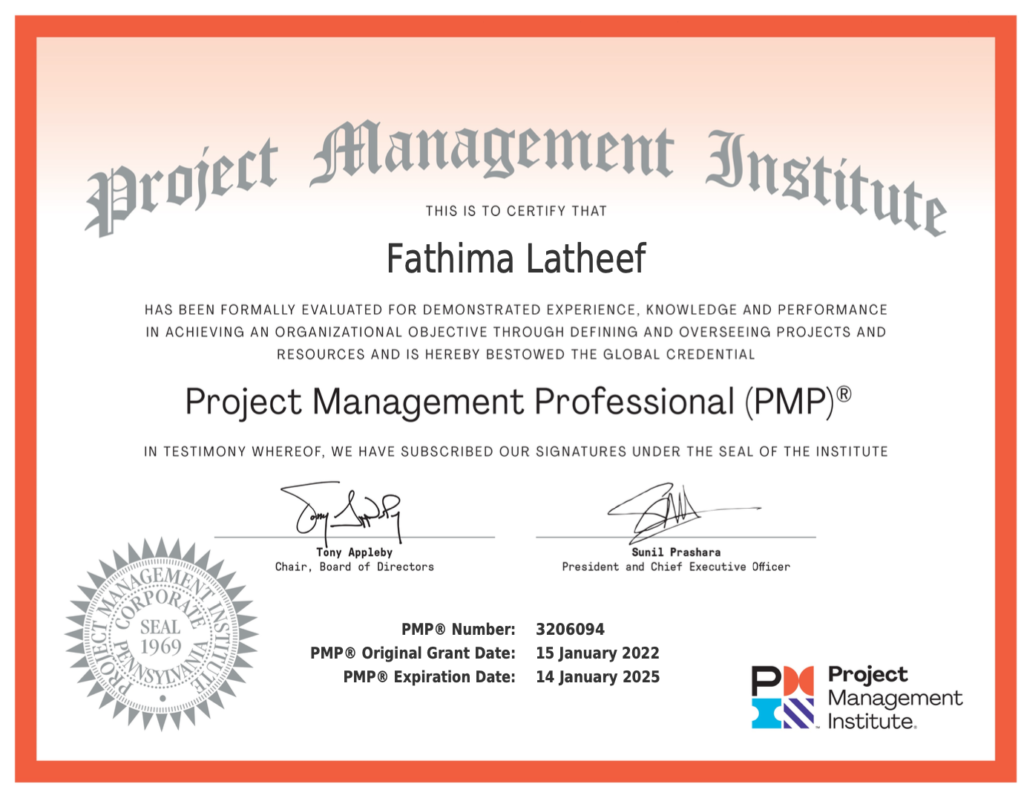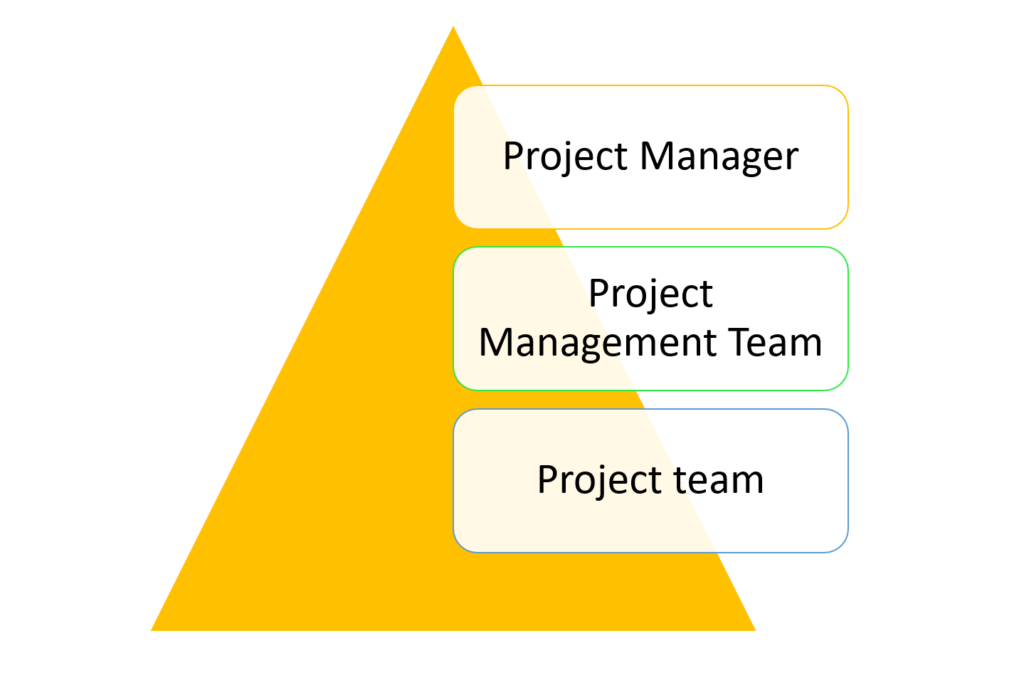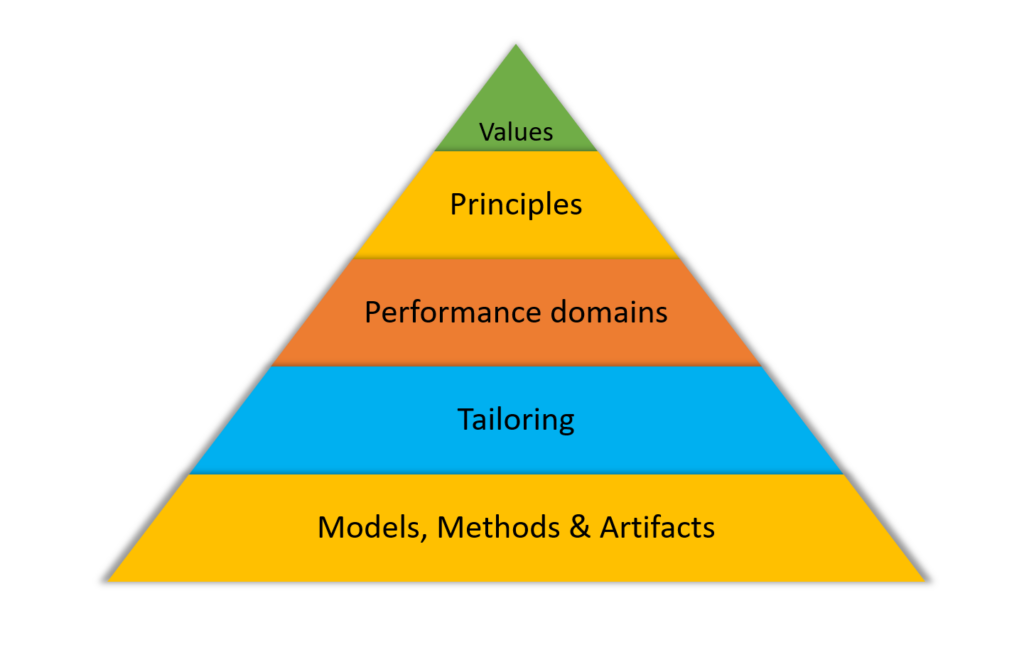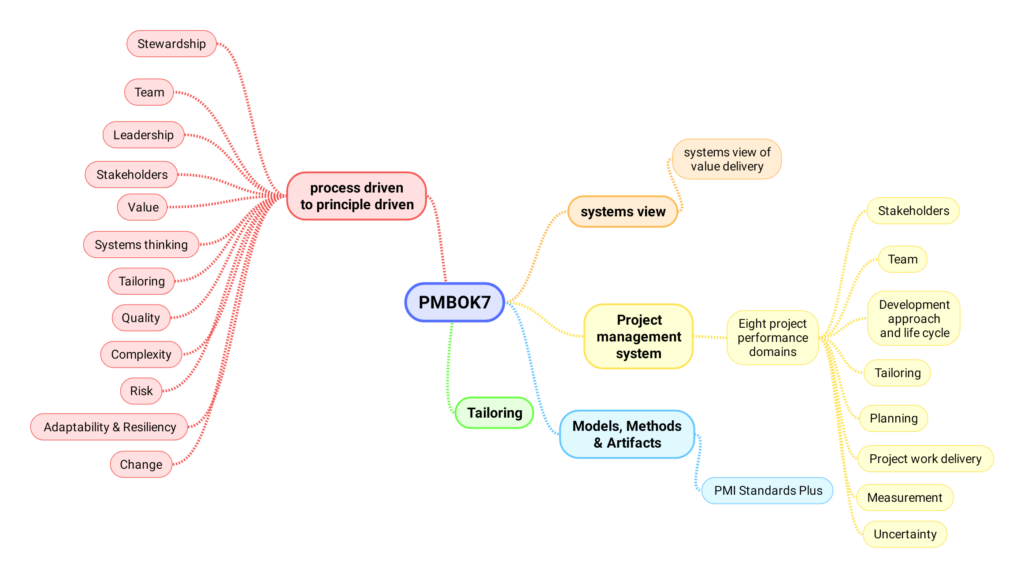A pleasant surprise. Came to know about this only today. Super delighted. Congratulations Fathima Latheef.

A pleasant surprise. Came to know about this only today. Super delighted. Congratulations Fathima Latheef.

Who should read this?
If you fall into anyone of the above categories, please read further….
PMBOK7 is structured into;
If you want to know more about the structure and principles of PMBOK7, I request you to read the two earlier articles, before reading this one;
The governing principles and the performance domains are supported by the Models, Methods and Artifacts. If you know PMBOK6, you have already covered all the Methods & Artifacts of PMBOK7. Hence, our primary focus is on the Models, followed by some of the methods and artifacts.
True to the spirit of Agile, we want to reduce the amount of unwanted work not done. Hence we are not repeating the topics again, instead we are providing you with the page numbers of PMBOK7, which will help you to get familiarized with the new terms of PMBOK7.
Here are the list of topics with page numbers of PMBOK7, for your quick reference.
Now open PMBOK7, and skim through these topics, instead of reading the entire PMBOK7.
At the end of this exercise, you can be almost sure that there is no gap between your knowledge and PMBOK7 provided your knowledge about PMBOK6 is good.
Point to note
Do not delete PMBOK6. It is still a valuable reference document along with PMBOK7.
Best wishes
PMRI team
What is the point in completing a project on time, within budget and meeting the complete scope, if the product of the project does not provide value to the sponsor / owner?. The single biggest issue for project failure is lack of solid business case. Many projects have solid business cases while starting the project, and very often they become irrelevant due to environmental impacts. The unknown – unknown risk of the pandemic itself have made many travel and tourism related projects irrelevant. Projects are plagued by uncertainties like never before, and it is the responsibility of the project manager to navigate these complexities successfully and achieve the intended benefits from the product / service the project delivers.
The shift of the project success criteria from just meeting the time, cost and scope criteria to delivering value to the owner of the project is the biggest change in PMBOK7 when compared to the earlier versions of the PMBOK. As a true project manager, one has to ensure the value delivery. Projects are initiated to achieve certain business goals and it is the opportunity of the project manager to ensure the achievement of these goals by delivering the intended benefits for which the project is undertaken in the first place.
The PMBOK7 brings more clarity to the project manager’s role.

Project manager is ultimately responsible for the success and failure of the project. The project manager role demands active participation while deciding the project management approach which will help the project to eliminate all negative risks and maximize the benefits from the positive risks from the initiation till the closure of the project.
The project management team comprises of the Project controllers, Engineering managers, Architects, Team leaders, Project coordinators, Quality managers, Procurement managers, Risk managers . Resource managers, Communications managers etc.
The project teams comprises of the people who really execute the work
Till PMBOK7 shows the growth path for those who belong to the Project management teams at present to the true Project Manager who is at the helm of affairs and whose primary objective is to steer the project through all uncertainties and deliver the intended value to the project owner and end user.
Another key aspect of PMBOK7 is that it is general enough to be applied for any type of project with proper tailoring. It is a collection of Models, Methods & Artifacts that can be arranged / sequenced as per the project management approach of the project.
If we approach PMBOK7, with this as the context, then everything starts making sense.

| Values | Principles | Performance domains |
| Responsibility | Stewardship | Stakeholders |
| Respect | Team | Team |
| Fairness | Stakeholders | Development approach & Life cycle |
| Honesty | Value | Planning |
| Systems thinking | Project work | |
| Leadership | Delivery | |
| Tailoring | Measurement | |
| Quality | Uncertainty | |
| Complexity | ||
| Risk | ||
| Adaptability & Resilience | ||
| Change Management |
Most of the Inputs, Tools & Techniques from PMBOK6 with some new additions forms the section Mpdels, Methods & Tools in PMBOK7.
| Models | Methods | Artifacts |
| Leadership models | Data gathering & Analysis | Strategy Artifacts |
| Communication models | Estimating | Logs & Registers |
| Motivation models | Meeting & Events | Plans |
| Change models | Other methods | Hierarchy Charts |
| Complexity model | Baselines | |
| Project team development models | Visual data and information | |
| Other models | Reports | |
| Agreements & Contracts | ||
| Other artifacts |
These models, methods and artifacts are linked to the performance domains. These linkages will be explained in the subsequent articles.

Till yesterday, when people anxiously asked me about the changes in PMBOK7, my reply was in the form of another question – ‘Can you execute a project without any one of the knowledge areas (listed below)?’. The answer is a unanimous ‘No’. So they are inevitable. They have to be there in the new version hidden somewhere. If you can master the 10 knowledge areas and their application in both predictive and agile project management, you are pretty much done with project management. That is my view.
I am glad that my views hold good after going through all the 370 pages of the new PMBOK7.
The Ten Knowledge Areas evolved from Version 1 to Version 6 of the Project Management Body of Knowledge;
These are immortal. Projects cannot succeed without them. The sequences may vary.
The PMBOK7 looks like an apex manual explaining the;

PMBOK7 comprises of 12 principles, 8 performance domains, tailoring guidelines and the models, methods and artifacts contained in a digital library ‘PM Standards Plus’ maintained by PMI. The immediate thought can be, about the 10 knowledge areas, 5 process groups, 49 processes and the inputs, tools & techniques and the outputs of the PMBOK6. Where is the place for them in the PMBOK7. All of that is under the digital library ‘PM Standards Plus’. In essence, nothing is lost during the transition from PMBOK6 to PMBOK7, and at the same time 12 principles, Eight project performance domains and the tailoring guidelines sits on top of the digital library PMStandards Plus which is nothing but the PMBOK6 contents, that makes up the 10 knowledge areas evolved from version 1.0 till 6.
How will this impact the different stakeholders who comprise the project management community?

Abrachan Pudussery (Aby)
Project Management Domain Expert, Wrench Academy